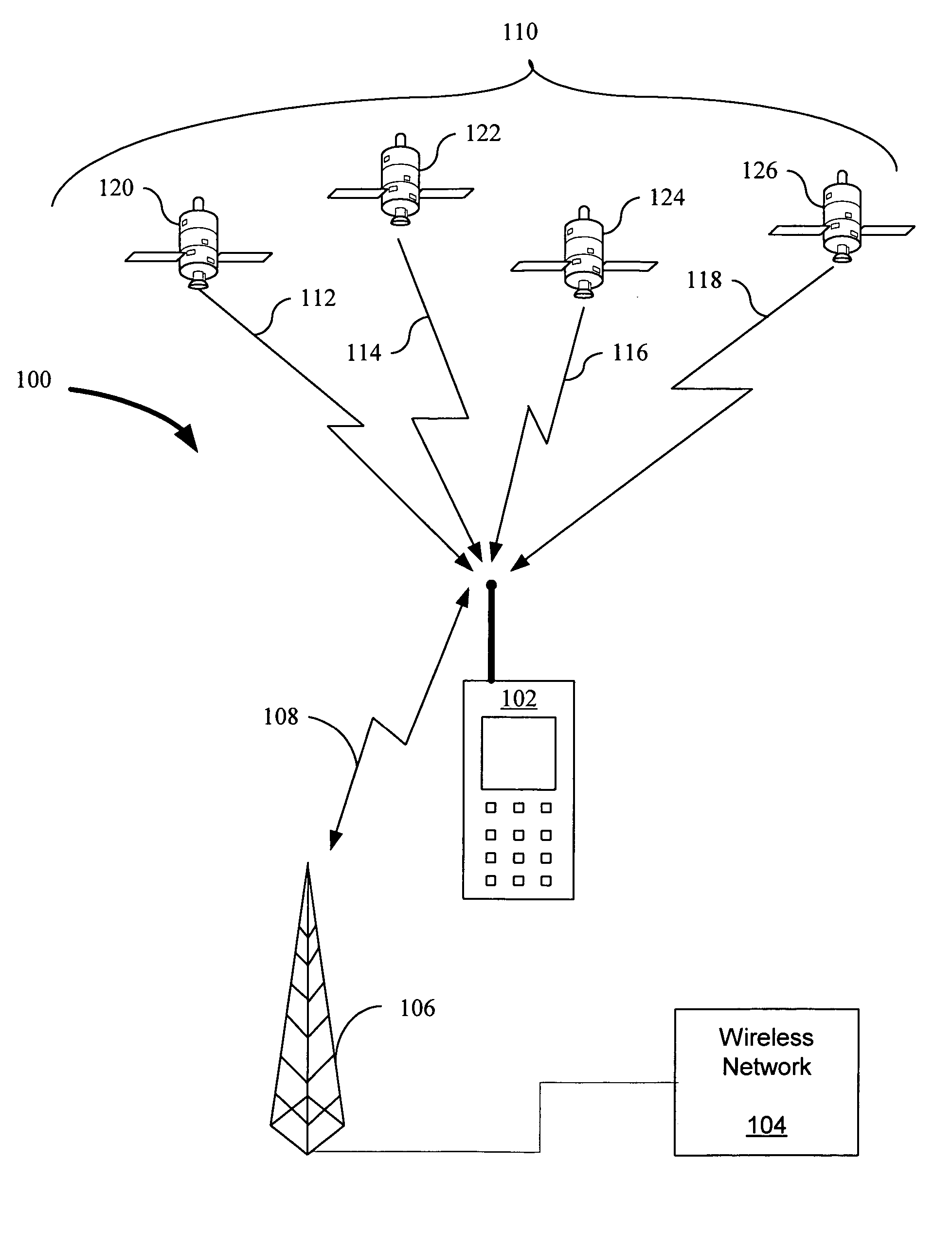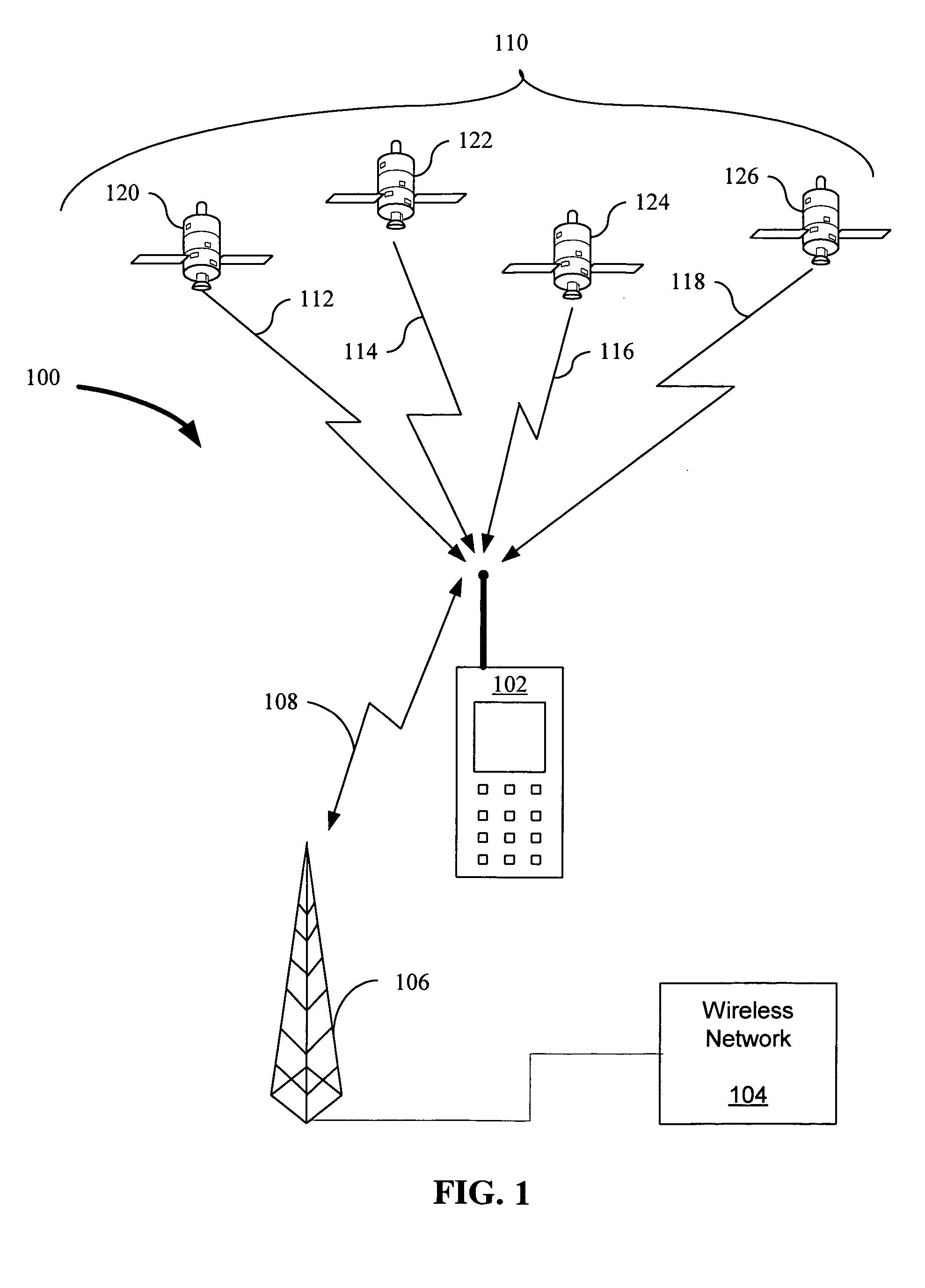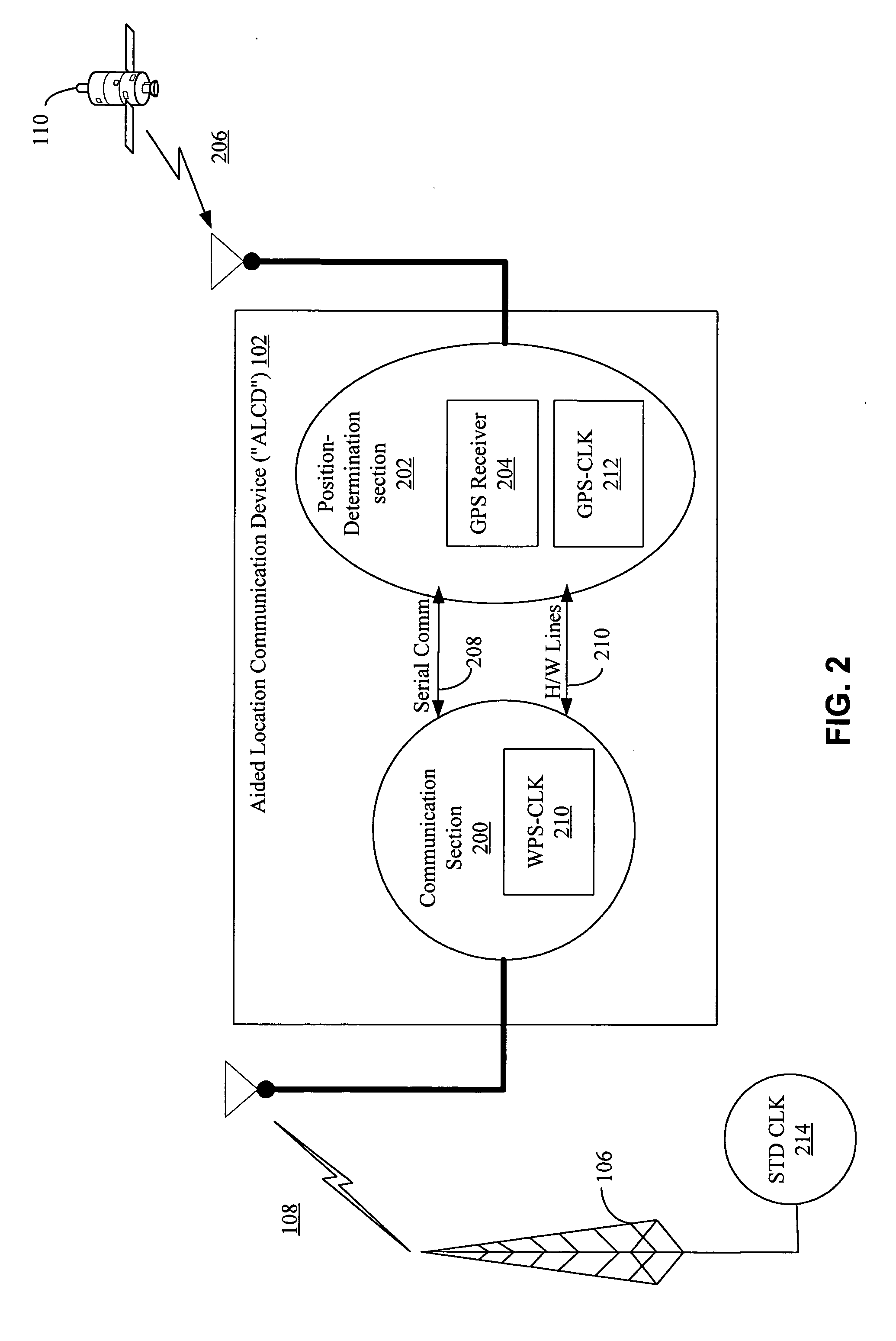Frequency phase correction system
a frequency phase correction and frequency phase technology, applied in the field of global positioning (“ gps”) receivers, can solve the problems of inability of emergency response centers to automatically determine and communicate their location, inability to automatically determine and communicate the location of conventional wireless devices without position determination capability, and inability to achieve the emergency response center's location. , to achieve the effect of improving the drift rate correction factor, reducing signal levels, and increasing the effective sensitivity of gps receivers
- Summary
- Abstract
- Description
- Claims
- Application Information
AI Technical Summary
Benefits of technology
Problems solved by technology
Method used
Image
Examples
Embodiment Construction
[0049] In the following description of the preferred and various alternative embodiments, reference is made to the accompanying drawings that form a part hereof, and in which is shown by way of illustration a specific embodiment in which the invention may be practiced. It is to be understood that other embodiments may be utilized and structural changes may be made without departing from the spirit and scope of this invention.
[0050] The invention is described with reference to various functional block diagrams, which illustrate possible applications of and embodiments of the invention from a functional perspective. These functional block diagrams should not be interpreted to imply or otherwise require a particular physical architecture in accordance with the partitioning of the functionality depicted therein. Instead, it will be appreciated by one of ordinary skill in the art that various alternative physical architectures (whether hardware, software or a combination thereof) can be...
PUM
 Login to View More
Login to View More Abstract
Description
Claims
Application Information
 Login to View More
Login to View More - R&D
- Intellectual Property
- Life Sciences
- Materials
- Tech Scout
- Unparalleled Data Quality
- Higher Quality Content
- 60% Fewer Hallucinations
Browse by: Latest US Patents, China's latest patents, Technical Efficacy Thesaurus, Application Domain, Technology Topic, Popular Technical Reports.
© 2025 PatSnap. All rights reserved.Legal|Privacy policy|Modern Slavery Act Transparency Statement|Sitemap|About US| Contact US: help@patsnap.com



